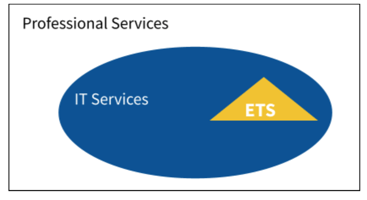In the previous blog post, we talked about the importance of incorporating Business Model Canvas...
The 4 Criteria Investors Use To Evaluate Your Emerging Tech Services Firm
This is a guest post by Chris Cobb. Chris is a CFO with deep expertise working with emerging tech services startups. To learn more from Chris, please connect with him on LinkedIn here.
If you have ambitions to receive outside funding in order to grow your tech services company or sell it, you should know from the very beginning what investors and acquirers look for. Investors considering emerging technology professional services firms are meticulous about certain financial metrics that indicate the company's potential for future profitability and growth. Understanding and presenting these metrics effectively can make a significant difference in attracting investments. This article will talk the founders of emerging tech services through these key metrics that investors or acquirers value.
Here are the key financial details investors want to see:
1. Per-Project Profitability
One of the primary concerns for investors is the per-project profitability. This metric is calculated by subtracting the directly allocated costs of delivering the project from the revenue generated by the project. Costs include personnel expenses and any technology-related expenditures specifically tied to the project's delivery.
The personnel expenses for project delivery include the allocated time (and therefore costs) of people directly working on the project, partner QA time, project management time, and client manager time. Total employee costs include direct compensation, but also taxes, benefits, and bonus costs. This allocation can be calculated while using team management software, like Harvest, to manage teams and work allocation. Each month, you should allocate the project labor costs into COGS to help determine your Gross Profit. The allocation process should be done as part of close; once all labor costs, by person, are known, use a journal entry to move COGS-related expenses.
Gross Margin above 50% is a good baseline metric. If you perform below this threshold, it will be tough to generate sufficient Gross Profit to pay for the SG&A of running the business. Perhaps as a smaller business you can perform at this level, but performing below 50% Gross Profit will reduce funds to enable certain overhead expenses such as training, recruiting, sales support, marketing and back office administration. Better performing organizations will be 60% Gross Profit.
Keep in mind, even with profitable per-project metrics, you still need to ensure your consultant utilization does not strand too much expense in Operational Expenses. Each consultant needs to generate sufficient billings to pay more than their fully loaded costs. A better rule of thumb is each consultant should, at a minimum, generate double their loaded cost in billings.
By showcasing strong per-project profitability, firms can demonstrate their efficiency and potential for sustainable growth. This Vixul article discusses how you can improve your gross profits by providing value-based pricing.
2. Average Selling Costs to Close a New Project
Investors are keen to understand the average selling costs involved in closing a new project. This encompasses the allocated time of salespeople, commissions, and the involvement of technical staff in scoping and designing the solution. Importantly, these costs should reflect both successful and unsuccessful project bids to provide a fully loaded sales cost perspective.
Understanding your selling costs is important - start with targeting an overall selling cost as a percent of total revenue. A good starting point is less than 25% of revenue. As your measurement matures, look to differentiate between the costs of acquiring a new client as opposed to selling an additional project to an existing client. As you scale and drive efficiencies into your selling methodology, look to bring your selling costs to less than 20% of revenue.
Demonstrating controlled and efficient selling costs can signal to investors that the firm has a robust and effective sales process.
3. Average Project Metrics
Several average project metrics are crucial for investors:
-
Average Project Length: The typical duration of a project from initiation to completion.
-
Average Revenue per Project: The mean revenue generated from each project.
-
Average Gross Margin: The average profit margin after accounting for direct costs.
-
Average Upsell or Project Extension: The additional revenue generated from upselling or extending projects. This can also be thought of as Client Lifetime Value.
These metrics provide a comprehensive view of the firm's project performance, customer profile, and revenue generation capabilities. In addition, it will show strategies that can be used for synergy or further growth. Check out this Vixul article to better understand some of these KPIs.
4. Revenue Conversion Rate
Investors want to know the conversion rate of proposed revenue in signed contracts to actual collected revenue. This metric highlights the firm's reliability and effectiveness in turning potential revenue into actual income. This figure should be high, greater than 90%. When below 90% it signals inefficient sales efforts or lower quality project management. While a figure greater than 100% may appear good, it can also signal proposal issues in scoping work and hidden client management costs dealing with cost overruns or expectation management needs.
A high conversion rate indicates strong project management and client satisfaction, both of which are attractive to investors.
Metrics For A Well-Performing Emerging Tech Services Firm
|
KPIs |
Industry Benchmark |
|
Revenue Growth |
50 - 100% |
|
Gross Profit Margins |
45 - 80% |
|
Customer Satisfaction |
NPS score 5+ |
|
Employee Satisfaction |
NPS score 5+ |
|
Utilization Rate |
about 85% |
Call to Action
For leaders and owners of professional services firms, integrating these financial metrics into your daily management practices is essential. Sales leaders should be well-versed in their average cost to close a deal, while delivery teams need to understand their average project profitability. Senior management should focus on average project revenue, project length, and client lifetime value to accurately forecast future business performance.
By regularly monitoring these metrics, firms can drive better business decisions, enhance profitability, and present a compelling case to potential investors.
This post does not constitute legal or financial advice. If after reading this post you find his insights valuable please reach out to him on LinkedIn.




